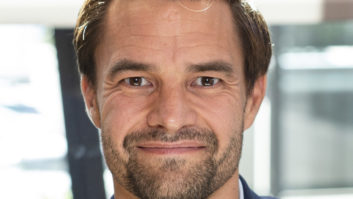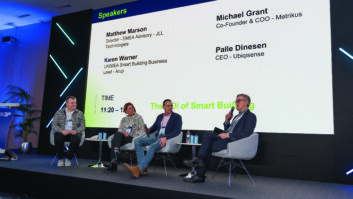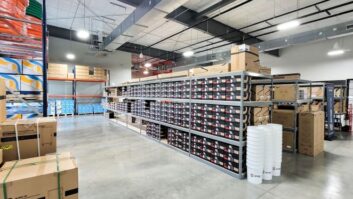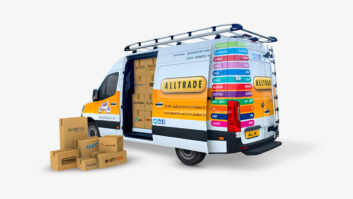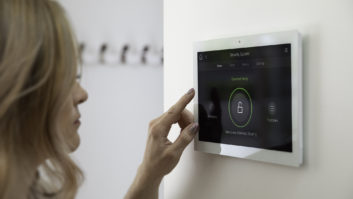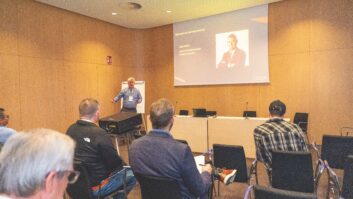Barry Bilclough, from intelligent building controls specialist Jung, examines how smart integration of building controls within a single visualisation user interface can reconcile increased use of technology with the drive for greater energy efficiency.
If there are two trends that have dominated the electrical industry over the past five years they are a drive for greater quality and functionality in electrical products and an emphasis on energy efficiency. The two are often at odds with each other: though most people would like to think that they ‘do their bit’ for the environment, few would be willing to give up their internet, TV or household gadgets in order to save the planet. That leaves the sector with a difficult challenge – how do we reconcile consumer demand for more and better technology to entertain us, power our economy and help us live more comfortably with the need to use less energy at home and at work?
It’s a challenge that the electrical industry has started to address with more energy efficient products, offering specifiers and consumers a clear choice with energy-rated products and low energy alternatives. The UK and European governments have also helped to square the circle, not only by legislating against unnecessary energy guzzlers like incandescent light bulbs, but also by educating the marketplace about the need to conserve energy and the simple steps that everyone can take to reduce their carbon footprint. However, education is a slow process and culture change is even slower – even though we know that we shouldn’t leave the TV on standby overnight or leave the lights on when there’s no-one in the room, out of habit or complacency, many of us often still do.
What we need is a human behaviour override that will ensure that the technology we use only consumes electricity when we’re actually using it. And that override already exists, in the form of intelligent building control systems that can integrate all a building’s electrical functions – even across a range of different protocols – and programme them to switch off or power down when not in use.@page_break@
Intelligent management
Intelligent buildings are not new: KNX, the worldwide open protocol that allows integrators to combine intelligent building controls from different manufacturers and different systems such as DALI, LON and BACnet is 20 years old this year. But, whereas in the past intelligent building controls were viewed by specifiers as a smart way to add value with bells and whistles, now they have become a way of combining wow factor technological features with a reduced carbon footprint.
Part of this shift has been brought about by a need to leverage available technology to reduce energy consumption in order to answer both legislation and market demand for a more eco-friendly approach. The rest is being driven by advances in technology that allow co-ordinated monitoring and visualisation of all the building control elements within a building across a range of protocols and Jung’s Facility Pilot system is at the forefront of this trend, allowing the end user to pre-programme, visualise and control everything from a single touch screen panel.
While the end user’s understanding of the Jung Facility Pilot needn’t stretch any further than the wall-mounted touch screen panel used to display the information and alter the settings, the Facility Pilot is, in fact, an advanced software package that enables comprehensive visualisation of any residential or commercial building. However, the Facility Pilot is more than just a visualisation tool and offers much more than real time building controls status; it also enables monitoring and control of all the building control systems, management of building control ‘events’ and programming of scenes. In effect, the software doesn’t just illustrate how the various systems are being used; it actively manages them.@page_break@
Multi-layered software
The key to ensuring that all this technology is simple to operate for the end user is to make all the existing functions process driven and to centralise control of all systems in a single PC-based device. In this way, even the most complex building control system is easy to operate, allowing the end user to access maximum functionality and utilise the system’s full energy-saving potential.
The Jung Facility Pilot achieves this by using a layered software structure. The first layer, EIB editor, makes the connection with the KNX bus system, which enables the system to gather all the required information like temperature values, lights status, etc direct from the bus and provide real time data. Importantly for larger commercial applications such as hospitals or university campuses, up to 10 different KNX installations can be connected simultaneously within a single visualisation project, the only limiting factor is network capability.
A second, ‘process model’ layer of the Facility Pilot’s software contains all the logical functions and operations like scenes, sequences, time functions and consequential events. Again, this answers the needs of even the most complex commercial applications as the system can be programmed to operate varying controls on a different basis depending on very specific circumstances. For example, a sports stadium may have differing requirements for match days and non-match days and these may be different again for corporate events or rock concerts. Equally, even in domestic applications requirements may change at different times of year or on different days of the week and the process model layer has been developed to maximise the system’s flexibility.
Finally, the system’s visualisation layer allows a bespoke user interface to be created using the touch screen Facility Pilot unit. In addition to the range of buttons, switches and indicators available from the system’s catalogue, end users can use background images and animated gifs to give context to the visualisation enabling them to view and control individual switches in a room on screen.
Flexible functionality
For the specifier, what’s important about this type of single user station integration is not the clever software and attention to detail behind it but the functionality it offers and the advantages it provides in terms of managing a building and driving down energy consumption. Enabling the interoperability and cross programming of all the controls in an intelligent building, this technology ensures that every aspect of the installation is linked, even outside of pre-programmed scenes. So, for example, if motion sensors in the home cinema of an executive home detect that there is no longer anyone in the room, the system will not only switch off the lights but also power down the A/V equipment and turn down or switch off the heating in the room. The parameters are determined by the end user but from there on in it’s the technology that manages the controls.
What’s more, this approach can also be used to actively identify areas where a building’s energy efficiency performance can be improved. The Jung Facility Pilot can record events on the bus and this is not only used to simulate occupancy when the building is empty using genuine usage patterns, it can also be used to track high energy consumption. For example, if manual controls have been used to increase the temperature in some areas of an office building, this will be clearly visible to the management team through the visualisation screen.
The future of intelligent installations
While KNX’s 20 years in the marketplace makes it far from ‘new’ in technology terms, the electrical industry is only now starting to exploit what this protocol can do. As the drive for greater functionality and lower energy consumption continues in both domestic and commercial applications, KNX’s 21st year might finally see it coming of age.

